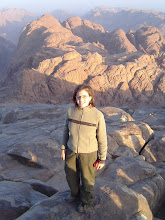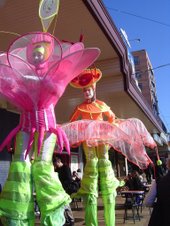"was established in September 2002 by a group of young army veterans and today it is comprised of 300 student activists, from a total of about 5,000 students that seek to join each year.
The association works...... to promote the establishment of villages for students and young entrepreneurs in peripheral areas about which there is an Israeli consensus—the Negev and the Galilee.
These villages will form the basis for permanent settlement and social involvement, while channeling the goodwill and energy of many young people in Israel for national service as part of their personal fulfillment."
The idea is that so many Israeli students come to the desert (Beer Sheva) to study, yet very few remain to make the desert their home. Ayalim is a modern Zionist movement which sees a big future for Israel in investing and developing sustainable communities in the Negev. The students who live in the Ayalim Villages form communities that support existing desert communities, bringing youth and vibrance and contributing time and energy to these communities.
Our weekend in the desert was a fitting end to a week in which we've been getting to know a lot more about the complex relationships between this desert and the people that live in it, and the people who don't. Although the Negev comprises 60% of Israel, only a small proportion of the population lives here. Yet there are many pockets of inspiring "pioneering" activity - for example, Be'er Milka, a community very near the Sinai Border which so far comprises only 13 families, living in trailer homes while they develop their agricultural businesses and plan how to build their community.
Earlier this week, however, we saw a different side to the story of life in the Negev. This was our study seminar on Bedouins of the Negev, led by Ye'ela, a Jewish Israeli anthropologist who works for a Bedouin Regional Council NGO. As one might expect, there are big problems with/for the Bedouin population in Israel. Many Bedouins live in unrecognised villages, meaning that they are not permitted to build such basic infrastructure as roads, schools, and in many cases, running water. For whatever reason (the reasons differ depending on who you ask, and can lead to heated debate amongst Israelis), there is an enormous mismatch between Bedouin needs/culture/aspirations - remembering that these are citizens of Israel - and Israeli government policy with regards to settlement in the desert. It's all extremely complicated and I certainly don't think I can do justice to this issue in one blog posting...but as the title suggests, even here in the desert where there are no green lines, there are still some problematic question about who can or should live here, and on whose terms.
PS. Hi Carmit, my newest blogfan :)


I remember when I lived in Beer Sheva, my friends in Jerusalem would ask, with horror, "how can you live there? It's so boring and ugly!" My host family would say that Beer Sheva, and the desert, is beautiful and that the city is for "people who have a life!" Have you heard similar comments from people who choose to live in the desert and those who choose to live elsewhere?
ReplyDelete